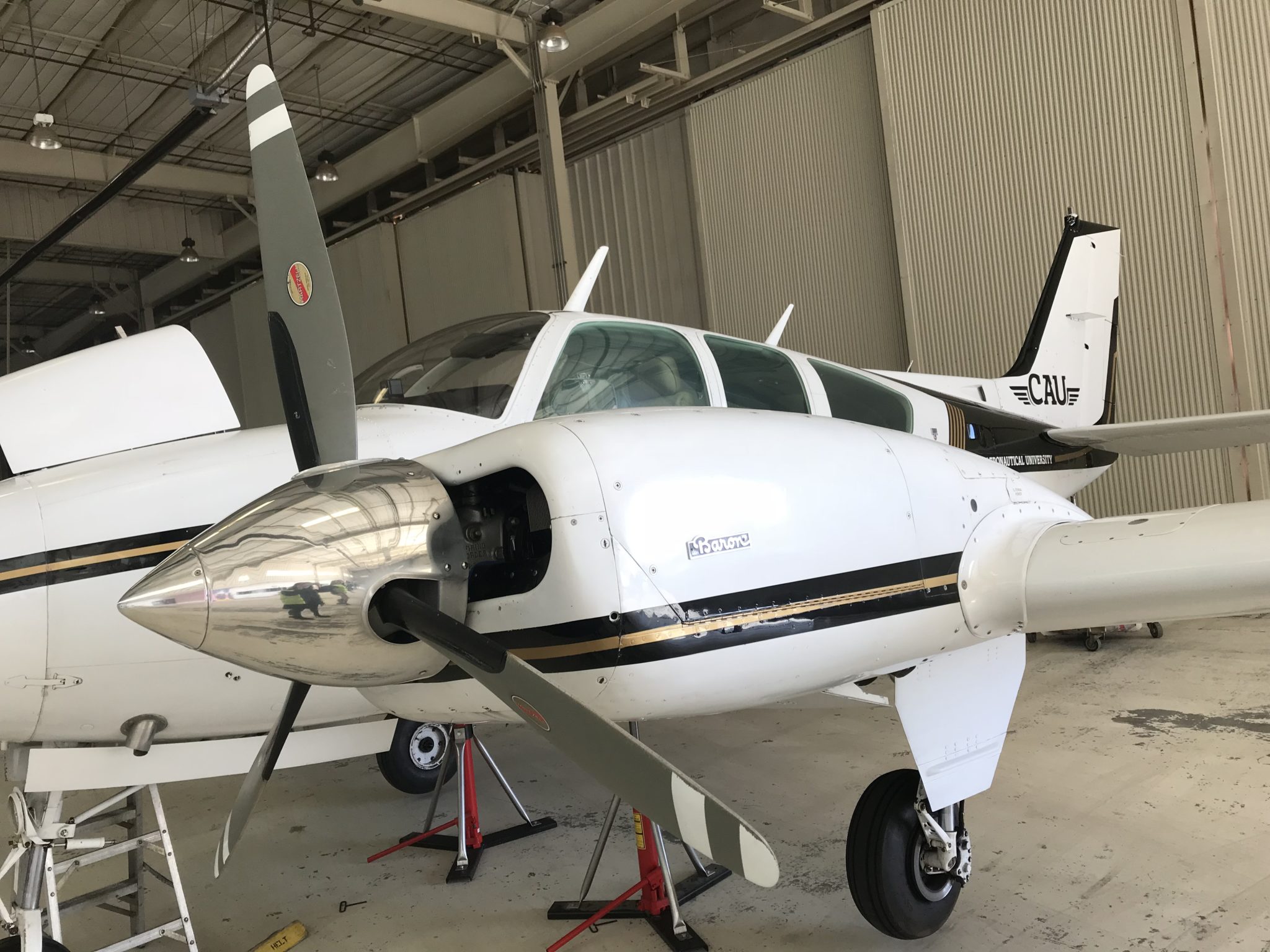Learning to fly a plane with one engine takes a lot of skill and practice. Most pilots begin their flight training in a single-engine aircraft. In general, single-engine airplanes are used in aviation schools to train students for their private pilot through their commercial certificates (and sometimes even certified flight instructor training). Once you are comfortable with your proficiency in flying a single-engine aircraft, you may decide to take the next step in your professional career and add a multi-engine rating to your existing pilot certificate.
What Is a Multi-Engine Rating?
A multi-engine rating is an add-on certification that licensed pilots can obtain, which allows them to fly planes with more than one engine. Most major regional and national airlines use multi-engine aircraft, making this a vital rating for anyone seeking a career as a professional airline pilot.
Am I Eligible for a Multi-Engine Rating?
Since this rating is an additional certificate for licensed pilots, some of the following prerequisites should have already been met or completed:
- Be at least 17 years old.
- Be an American citizen or hold a TSA card.
- Hold the appropriate FAA medical certificate.
- Read, speak, write, and have basic proficiency in English.
- Demonstrate the ability to perform basic math calculations.
- Hold a current sport, private, commercial, or airline transport pilot certificate.
How to Earn a Multi-Engine Rating
Flying a multi-engine aircraft involves learning the many differences in aerodynamics, systems, power, and limitations between single-engine planes and those with more than one engine. To earn your multi-engine rating, you must demonstrate your knowledge of the increased complexity of multi-engine aircraft from takeoff through landing. The steps of preparing and training include:
Aeronautical Knowledge
You will need an endorsement from your flight instructor that confirms your competency in flying a multi-engine aircraft. While there is no official FAA written exam to earn this rating, your multi-engine knowledge should include emergency operations, determining weight distribution and fuel calculations, and more. Your instructor may ask questions about this information before, during, and after your checkride.
Flight Training
Again, the FAA has no official guidelines regarding the minimum time required to train before getting your endorsement; however, you must be comfortable and confident enough to fly a multi-engine aircraft and be able to pass subsequent check-rides. Training focuses on everything mentioned thus far:
- Learning to work with the additional velocity and power generated by multiple engines.
- Maintaining control during emergency procedures.
- Handling crises.
Additionally, you must show understanding and aptitude for performance maneuvers, spin and stall awareness, and instrument approaches.
Practical Test – The Checkride
When you are ready for your checkride, be sure you have practiced various situations that involve flying a multi-engine airplane with one malfunctioned engine, including takeoff, landing, instrument approach, flight maneuvers, and more. You may be tested on single engine skills as well. The authorized instructor in charge of your checkride is not only testing your technical skills but also wants to ensure that you can remain composed in challenging scenarios and handle the stress of a more complex aircraft. One of the critical factors to keep in mind during your checkride is staying calm and making good decisions.
Pilot Privileges of a Multi-Engine Rating
Fly Larger Aircraft
Multi-engine airplanes are more powerful, bigger, and can carry more weight – including both passengers and cargo. Whether upgrading from solo day trips in a single-engine plane to larger dual-engine aircraft with more payload capacity or transitioning from being a private pilot for fun to a commercial pilot for profit, a multi-engine rating can be worthwhile and valuable.
Go Faster, Higher, and Farther
Increased power means more speed. Multiengine aircraft fly much faster than single-engine planes, saving time and benefiting private pilots who transport themselves or their clients to professional appointments and take their families and friends on vacation. The fuel costs may be a little higher, but the journey will be quicker with fewer (or no) stops along the way. If the trip is cross country, you may be able to save on fuel costs, as multi-engine aircraft can cruise at higher altitudes – which decreases fuel consumption.
Increased Safety / More Airspace Access
If you are flying an airplane with a single engine, and that engine fails or has trouble, you must land quickly with limited choices. Having multiple engines gives you more options if one shuts down. Even in a small dual-engine plane, you can use the performance and thrust of the second engine to seek a more-appropriate landing place, even if you are losing altitude. Additionally, with a multi-engine rating, you can safely fly over areas where single-engine airplanes aren’t recommended, such as rough mountain terrain or long stretches of ocean.
Be More Professionally Competitive
Even if you are not interested in working for a national or regional airline, many corporate and charter organizations prefer (or require) their pilots to have a multi-engine rating. Any additional certificates or ratings you earn can help advance your career as a pilot, and “getting the multi” can help open many doors as you continue along this professional path. Be sure to research the job requirements for the position and/or company you’re hoping to work for, as requirements may differ from organization to organization.
Conclusion
If you already have the required pilot certifications and instrument ratings, it would be in your best interests to spend the extra time and study needed to complete this rating. The additional knowledge and skills can enhance your flying abilities, and the multi-engine rating can unlock new experiences and adventures.
At CAU, you can earn your multi-engine rating as part of a bachelor’s degree program that includes earning up to 6 certificates and ratings (private pilot, instrument rated pilot, certified flight instructor, certified flight instructor instrument, and commercial pilot-single and multi-engine). For more information, call 661-490-9416.
Ready to soar in your aviation career?
Mr. Matthew A. Johnston has over 23 years of experience serving various roles in education and is currently serving as the President of California Aeronautical University. He maintains memberships and is a supporting participant with several aviation promoting and advocacy associations including University Aviation Association (UAA), Regional Airline Association (RAA), AOPA, NBAA, and EAA with the Young Eagles program. He is proud of his collaboration with airlines, aviation businesses and individual aviation professionals who are working with him to develop California Aeronautical University as a leader in educating aviation professionals.


